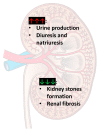Caffeine as a Factor Influencing the Functioning of the Human Body-Friend or Foe?
- PMID: 34578966
- PMCID: PMC8467199
- DOI: 10.3390/nu13093088
Caffeine as a Factor Influencing the Functioning of the Human Body-Friend or Foe?
Abstract
Nowadays, caffeine is one of the most commonly consumed substances, which presents in many plants and products. It has both positive and negative effects on the human body, and its activity concerns a variety of systems including the central nervous system, immune system, digestive system, respiratory system, urinary tract, etc. These effects are dependent on quantity, the type of product in which caffeine is contained, and also on the individual differences among people (sex, age, diet etc.). The main aim of this review was to collect, present, and analyze the available information including the latest discoveries on the impact of caffeine on human health and the functioning of human body systems, taking into account the role of caffeine in individual disease entities. We present both the positive and negative sides of caffeine consumption and the healing properties of this purine alkaloid in diseases such as asthma, Parkinson's disease, and others, not forgetting about the negative effects of excess caffeine (e.g., in people with hypertension, children, adolescents, and the elderly). In summary, we can conclude, however, that caffeine has a multi-directional influence on various organs of the human body, and because of its anti-oxidative properties, it was, and still is, an interesting topic for research studies including those aimed at developing new therapeutic strategies.
Keywords: caffeine; caffeine action; human body; oxidative-antioxidant balance.
Conflict of interest statement
The authors declare no conflict of interest.
Figures





References
-
- Chawla J. Neurologic Effects of Caffeine Physiologic Effects of Caffeine. Medscape Ref. Drug Dis. Proced. 2015;24:1–8.
-
- Conway J. Global Coffee Consumption, 2020/21|Statista. [(accessed on 5 May 2021)]. Available online: https://www.statista.com/statistics/292595/global-coffee-consumption/
Publication types
MeSH terms
Substances
LinkOut - more resources
Full Text Sources
Medical

